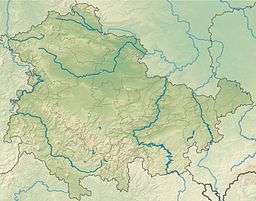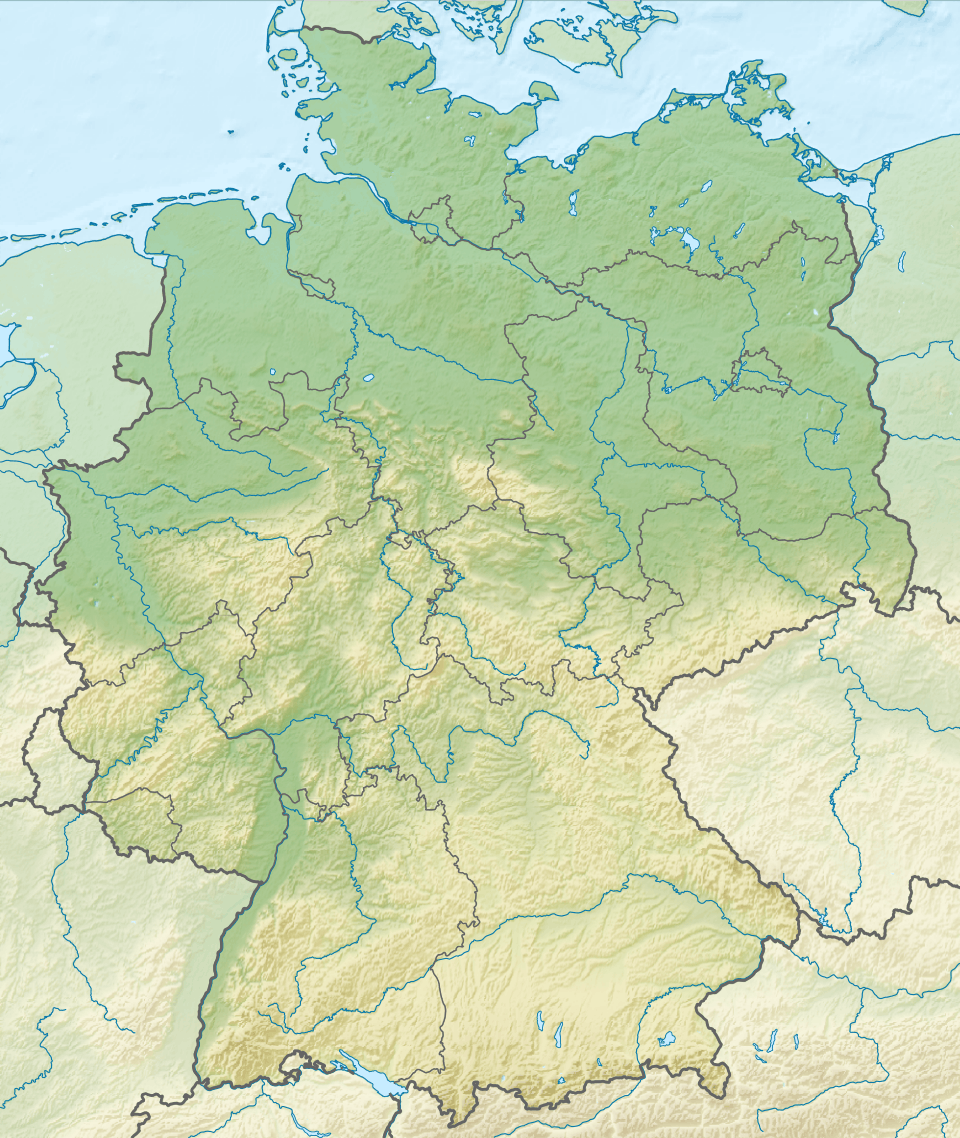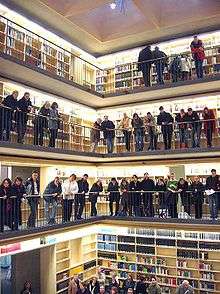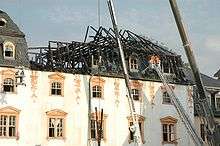Duchess Anna Amalia Library
The Duchess Anna Amalia Library (German: Herzogin Anna Amalia Bibliothek) in Weimar, Germany, houses a major collection of German literature and historical documents and is part of the UNO designated Classical Weimar (World Heritage Site). In 2004 a fire destroyed the main wing and a substantial part of the collection; restoration of salvaged volumes lasted until 2015.
| UNESCO World Heritage Site | |
|---|---|
 | |
| Location | Weimar, Germany |
| Part of | Classical Weimar |
| Criteria | Cultural: (iii)(vi) |
| Reference | 846-006 |
| Inscription | 1998 (22nd session) |
| Website | www |
| Coordinates | 50°58′43″N 11°19′56″E |
 Location of Duchess Anna Amalia Library in Thuringia  Duchess Anna Amalia Library (Germany) | |
The library contains:

- 1,000,000 books
- 2,000 medieval and early modern manuscripts
- 600 ancestral registers
- 10,000 maps
- 4,000 musical scores
The research library today has approximately 850,000 volumes with collection emphasis on the German literature. Among its special collections is an important Shakespeare collection of approximately 10,000 volumes, as well as a 16th-century Bible connected to Martin Luther.
History
In 1991, the tricentennial of its opening to the public, the Ducal Library was renamed for Anna Amalia, Duchess of Saxe-Weimar-Eisenach, who arranged in 1766 for the courtly (hoefische) book collection to be moved into the library.
The main building is the Green Castle (Grünes Schloss), Anna's residence, which had been built between 1562 and 1565. The architect was Nikolaus Gromann. The dowager Duchess had the building converted into a library in 1761. The Duchess, seeking a tutor for her son Duke Carl August, hired Christoph Martin Wieland, an important poet and noted translator of William Shakespeare. Wieland's Shakespeare volumes formed the core of the collection. From an architectural standpoint, the library is world-famous for its oval Rococo hall featuring a portrait of Grand Duke Carl August.

One of the library's most famous patrons was Johann Wolfgang von Goethe, who worked there from 1797 to 1832. The library also includes the world's largest Faust collection. The Duchess's significant 13,000-volume music collection is also available in the library.
In World War II, most of the collection was housed elsewhere to preserve it from Allied bombing.
Today, the library is a public research library for literature and art history. The main focus is German literature from the Classical and the late Romantic eras.
Modern extension
In 2001, construction began on a new multiple-floor facility to house some 1,000,000 books under the "Square of Democracy" (Platz der Demokratie) between the Music University and the Red and Yellow Castle. In its pre-renovation state, the building had structural flaws which endangered many valuable books and the special collections.
The new development is estimated to have cost €24 million and has an area of 6,300 m². The area is divided into upper and lower floors. The new building would connect the historical library building with the user areas of the reconstructed Red and Yellow Castle. The grand opening of the new complex is slated for February 2005.
Fire of 2004

Part of the collection was burned in a fire on 2 September 2004, which destroyed 50,000 volumes[1] of which 12,500 are considered irreplaceable. Another 62,000 volumes were severely damaged. However, some 6,000 historical works were saved, including the 1534 Luther Bible and a collection of Alexander von Humboldt's papers, by being passed from hand to hand out of the building. Some 28,000 books in the building were rescued and so not affected by the fire. Other items, like Friedrich Schiller's death mask, suffered damage too, and 35 historic oil paintings were destroyed.
The fire came as a particular tragedy, in part because the collection was scheduled to move to another site in late October, little more than a month later. Some of the damaged books are being freeze-dried in Leipzig to save them from rotting as a result of water damage. Book restoration is scheduled to last at least until 2015.
In June 2005, it was announced that among the manuscripts that were out of the building at the time of the fire, and thus saved from damage, there was a hitherto undiscovered 1713 aria by Johann Sebastian Bach entitled "Alles mit Gott und nichts ohn' ihn".
The library building was restored for $18.2 million and reopened at the end of October 2007 with some 60,000 volumes. This includes the undamaged books, the first restored books and the replacement volumes obtained on the international antique book market, from other libraries, or by donation. An online database lists the books the library is still seeking in order to replace volumes it lost.
References
- Hilfe für Anna Amalia ( Archived 4 September 2011 at the Wayback Machine)
External links
| Wikimedia Commons has media related to Duchess Anna Amalia Library. |
- Duchess Anna Amalia Library – official site
- Library Goes up in Flames, Destroying Literary Legacy
- (Jerusalem Post)
- Associated Press article
- BBC article
- MSNBC article
- New York Times article
- Muslim Librarians Visit Germany: The Catalogues of the Queen of Sheba
- 360° Flash-Panoramas: 2004 before fire, 2004 back fire